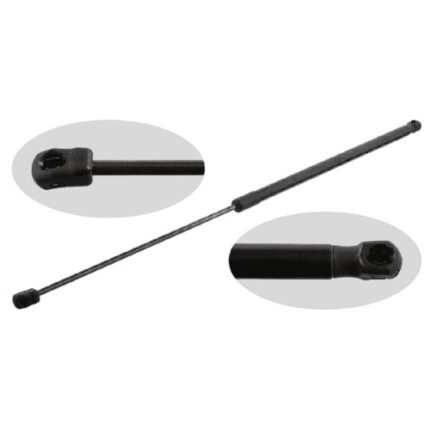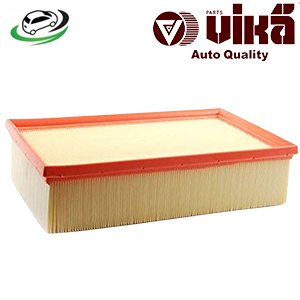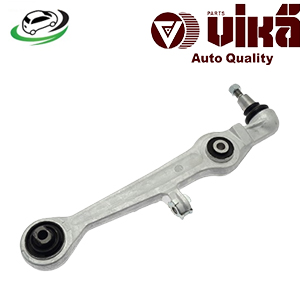-6%
Get Front Lower Control Arm AUDI B5 A4/B5 S4/C5 A6/D2 A8 / VW Passat B5 1.8T/V6 30v/W8 4D0407151P
The control arm, a crucial part of a vehicle’s suspension system, plays a vital role in ensuring stability, comfort, and handling. Often referred to as an A-arm or wishbone, the control arm connects the wheel hub and steering knuckle to the vehicle’s frame. This connection allows for controlled movement and the absorption of shocks and vibrations from the road.
Structure and Function
Control arms come in various designs, primarily categorized as upper and lower control arms. Typically, vehicles feature two control arms per wheel: one upper and one lower. These arms are made of steel or aluminum to withstand the stresses and strains of driving.
Components of a Control Arm
- Arm Body: The main structural element, often a triangular or wishbone shape, provides strength and stability.
- Bushings: Located at the pivot points, bushings reduce friction and absorb vibrations. Made of rubber or polyurethane, they allow for smooth movement.
- Ball Joints: These spherical bearings connect the control arm to the steering knuckle, allowing for rotational movement and flexibility.
- Mounting Points: Where the control arm attaches to the vehicle’s frame and suspension components.
Types of Control Arms
- Single Control Arm (MacPherson Strut): Common in front-wheel-drive vehicles, this type integrates the strut and coil spring, reducing weight and complexity.
- Double Wishbone: Found in many high-performance and off-road vehicles, this setup includes an upper and lower control arm, offering superior handling and control.
- Multi-Link Suspension: Utilized in luxury and high-performance cars, this system uses multiple arms to provide precise control over wheel movement and alignment.
Benefits of Control Arm
Enhancing Vehicle Stability and Handling
One of the primary benefits of control arms is their contribution to vehicle stability and handling. By maintaining the proper alignment of the wheels, control arms ensure that the tires maintain optimal contact with the road surface, which is crucial for handling and maneuverability.
Improved Cornering and Steering Response
Control arms facilitate precise control of the wheel’s movement, which enhances cornering capabilities. When a vehicle turns, the control arms work to keep the wheels aligned, minimizing body roll and maintaining a stable trajectory. This is particularly evident in double wishbone and multi-link suspension systems, which provide superior handling compared to simpler suspension setups.
Reduced Body Roll
Control arms help in reducing body roll by stabilizing the vehicle during turns. This stabilization ensures that the weight of the vehicle is distributed more evenly across all four tires, improving grip and reducing the risk of skidding or loss of control.
Enhancing Ride Comfort
Control arms play a significant role in absorbing shocks and vibrations from the road, thereby enhancing ride comfort. The bushings and ball joints in control arms act as buffers, mitigating the impact of road irregularities.
Vibration Dampening
The bushings, usually made of rubber or polyurethane, absorb minor vibrations and shocks from the road. This dampening effect reduces the transmission of these vibrations to the vehicle’s cabin, resulting in a smoother and more comfortable ride for passengers.
Improved Shock Absorption
Control arms contribute to the overall suspension system’s ability to absorb larger shocks. By maintaining the alignment and positioning of the wheels, control arms ensure that the shock absorbers and struts can function effectively, further enhancing ride quality.
Ensuring Safety
Safety is a paramount concern in vehicle design, and control arms play a crucial role in maintaining and enhancing vehicular safety. They ensure that the wheels remain properly aligned and in contact with the road, which is essential for safe driving.
Consistent Wheel Alignment
Properly functioning control arms ensure that wheel alignment is maintained, which is critical for safe handling and braking. Misaligned wheels can lead to uneven tire wear, reduced traction, and compromised braking performance.
Enhanced Braking Performance
Control arms help maintain optimal tire contact with the road, which is crucial for effective braking. Proper alignment and stability provided by control arms allow the braking system to function more efficiently, reducing stopping distances and improving overall safety.
Stability in Adverse Conditions
In adverse driving conditions, such as wet or icy roads, control arms help maintain stability by keeping the wheels properly aligned and in contact with the road. This stability is essential for preventing skidding and maintaining control in challenging conditions.
Prolonging Tire Life
Control arms contribute to extending the life of tires by ensuring even tire wear. When wheels are properly aligned and stable, the tires wear more evenly, which not only extends their lifespan but also improves fuel efficiency and handling.
Even Tire Wear
Misalignment can cause uneven tire wear, leading to premature tire replacement and increased costs. Control arms help maintain proper alignment, ensuring that tires wear evenly and last longer.
Reduced Maintenance Costs
By preventing uneven tire wear and reducing strain on other suspension components, control arms can help reduce overall maintenance costs. Regular inspections and timely replacement of worn control arm components can prevent more significant issues down the line.
Advances in Control Arm Technology
Modern advancements in control arm technology have further enhanced their benefits, contributing to better vehicle performance and efficiency.
Lightweight Materials
The use of lightweight materials, such as aluminum and high-strength steel, in control arm construction has improved vehicle efficiency. Lighter control arms reduce the overall weight of the suspension system, which can enhance fuel efficiency and handling.
Advanced Bushing Designs
Innovations in bushing materials and designs have improved the durability and performance of control arms. Advanced bushings offer better vibration dampening, increased lifespan, and enhanced overall suspension performance.
Improved Manufacturing Techniques
Modern manufacturing techniques have led to higher quality and more precise control arms. These improvements ensure consistent performance, greater durability, and better overall vehicle dynamics.
Importance in Vehicle Dynamics
The control arm’s primary function is to manage the motion of the wheels relative to the vehicle’s body. This role is crucial for several reasons:
- Stability and Handling: Control arms maintain wheel alignment and ensure the tires remain in contact with the road, providing better control and handling.
- Ride Comfort: By absorbing shocks and vibrations, control arms contribute to a smoother ride.
- Safety: Proper functioning control arms are essential for maintaining the structural integrity of the suspension system, which in turn affects braking and steering performance.
Common Issues and Maintenance
Control arms are subject to wear and tear due to constant movement and exposure to road conditions. Common issues include:
- Worn Bushings: Over time, bushings can degrade, leading to increased vibrations, noise, and reduced handling performance.
- Damaged Ball Joints: Ball joints can wear out, causing loose steering and uneven tire wear.
- Corrosion and Damage: Exposure to elements can lead to rust and structural damage, compromising the control arm’s integrity.
Signs of Control Arm Problems
- Clunking Noise: A clunking or knocking sound, especially when driving over bumps, can indicate worn bushings or ball joints.
- Steering Issues: Difficulty in steering or a wandering feeling can signal control arm problems.
- Uneven Tire Wear: Worn control arm components can cause misalignment, leading to uneven tire wear.
Maintenance and Replacement
Regular inspection and maintenance are essential for ensuring control arms function correctly. Replacing worn bushings and ball joints, as well as addressing any signs of corrosion, can extend the life of the control arm and maintain vehicle performance.
Advances in Control Arm Technology
Modern vehicles benefit from advances in control arm design and materials, which enhance performance and durability.
- Lightweight Materials: The use of aluminum and high-strength steel reduces weight, improving fuel efficiency and handling.
- Advanced Bushings: New materials and designs in bushings offer better vibration dampening and longevity.
- Improved Manufacturing Techniques: Precision engineering and manufacturing processes ensure higher quality and consistency in control arm production.
Follow us on Facebook for more parts.



